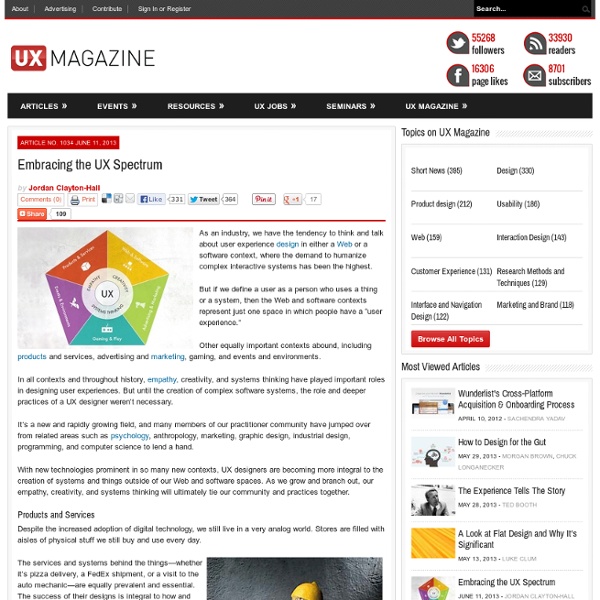Three Ways to Think Deeply at Work - David Rock
by David Rock | 11:00 AM September 28, 2012 Most HBR readers can relate to a central dilemma of knowledge work today: We’re using rules for how we work in a factory in a time when most of our work product requires deep thinking. A study of 6,000 people conducted by the NeuroLeadership Group in collaboration with a large healthcare firm asked respondents questions about where, when, and how people did their best thinking. Only 10 percent said it happened at work. At the NeuroLeadership Institute, we’ve been looking at ways to bring more of that deep thinking into the workplace. More specifically, we’ve been conducting research into what brain science shows us about how leaders think, develop, and perform, and recently we’ve been studying the role of the unconscious mind. We’ve identified three particularly promising techniques, backed up by research, than can help you think more deeply: Distracting Yourself Carnegie Mellon neuroscientist David Creswell can shed some light on this topic.
Business Model Innovation Through Process Change - Brad Power
by Brad Power | 8:00 AM August 20, 2012 More and more companies I see these days are making strategic process changes to drive unprecedented business model innovation. Forbes has embraced online collaborative publishing as it adds a substantial online presence to its traditional print magazine. Healthcare organizations are implementing electronic health records systems so they can migrate from islands of medical services to sharing patient data across care providers. Consumer packaged goods manufacturers are monitoring social media to get real-time information on their customers’ perceptions and share it with brand managers. Business model innovation — often enabled by new technology platforms — isn’t new. Embrace Industry Disruption Consider the transformation at Forbes, the business publishing and media company, which has embraced the shift from traditional print media to online publishing, salvaging a business that was being disrupted, and becoming a disrupter itself.
Big Technology Change Without Big Risk - Brad Power
by Brad Power | 7:00 AM July 31, 2012 Companies can reduce risk and allow organizational learning by breaking major process improvements into a series of small, reversible experiments. But when the change involves a new information technology, it’s harder to make incremental updates. This approach reduces risks and allows people to learn from each, and make adjustments as they go. But when the change involves a new information technology, it’s harder to make incremental updates. The conventional wisdom when implementing such software packages is to identify all the stakeholders and include representatives of each group on the implementation team. So is there a way to implement big process and system changes while engaging workers and enabling organizational learning? 1. 2. 3. Solar has turned over control of the rollout to the business (rather than driving it from IT as an IT project).
Holistic Enterprise Application Development Strategy | Universal Mind
We’ve married industry best practices with the knowledge of how Solution Strategy, User Experience, Technology, and Delivery teams work best to define a unique delivery framework that includes these fundamentals: Flexibility — We're flexible in our approach to establish a project delivery framework that aligns with your unique environment and project requirements. Transparency — Clear communication is vital to your project's success so our framework provides a supportive, integrated design and development experience. Cross-Practice Collaboration — By providing the common language and approach that ensures collaboration across all disciplines, we share critical knowledge collaboratively, beginning to end, to consider the full picture throughout your project. Our approach creates an environment for sharing ideas to deliver what your customers and teams really want and what you really need — the right solution anytime, anywhere, on any device.
A Deep Dive Into Customer Experience
Last fall I wrote an article for UX Magazine about the shift from user experience (UX) to customer experience (CX). In a nutshell, I explained how the field of customer experience has risen to prominence over the past several years due to forces like technology commoditization, digital disruption, and social media. Now I want to go deeper by explaining some of the key differences between these two established fields. Difference #1: Scope UX professionals typically focus on the design and development of digital interfaces—today that translates primarily into websites, tablet apps, and mobile apps. To belabor the obvious, CX professionals hardly ever mention “users”—they talk about “customers” instead. That’s why at Forrester Research, we define CX as how customers perceive their interactions with your company. Difference #2: Educational & Professional Background This background is also relevant for a career in customer experience. Difference #3: Tools & Methodologies Conclusion
Why do projects take so long?
Some projects take a long time to develop. In different contexts, the definition of "long" may vary. It was always interesting to me, what are the reasons for it. I've started collecting some thoughts on this topic. Ask yourself and your teammates about the last project you've been working on. Surprisingly often, I'm answering to myself - yes, that would be possible, given some assumption. Where does it come from? Is it the known tendency to underestimating a problem by developers? "This is time it will be different, faster" This is another popular trend among us, developers. Where does this optimism come from? It's almost impossible to get a second chance of working on the same project. Is it the technology that let us think, that we could do better this time? I remember a situation, back in 2004/2005. What's the lesson? Is it easy to repeat those aspects? Have you ever attended a hackathon? There are many kinds of hackathons. How can we apply hackathon lessons to our every-day projects?



